Ebony Welborn’s love for the marine environment began on the East Coast, as a child in North and South Carolina. Meanwhile, on the West Coast, Savannah Smith was finding her lifelong passion for community and marine biology amid the Salish Sea. In 2020, Ebony and Savannah teamed up to found Sea Potential, which works to empower young people of color to access maritime careers and explore interests in marine science, as well as provide industry consulting that fosters workplace cultures rooted in representation over assimilation—strengthening community relationships and driving industry innovation..
In college, both Ebony and Savannah faced a sense of isolation as women of color in predominantly white institutions. Their professional journeys mirrored these challenges. These shared experiences would eventually bring them together, not just as friends but as co-founders determined to break down the barriers they had encountered.
Ebony and Savannah connected while working as AmeriCorps staff in 2019. In a group exercise, they were asked a question: if you could do anything, what would you do? Both women responded that they wanted to break down barriers keeping Black, indigenous, and people of color from marine science and maritime jobs.
A year after that conversation, Ebony and Savannah co-founded Sea Potential. They wanted to work on the problem they had seen from two angles: helping youth of color feel more connected to marine ecosystems and maritime careers, while also encouraging employers to embrace the unique perspectives of new and existing Black, indigenous, and people of color employees.

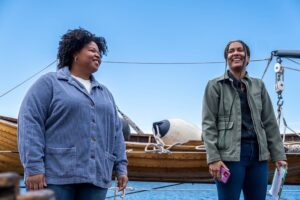
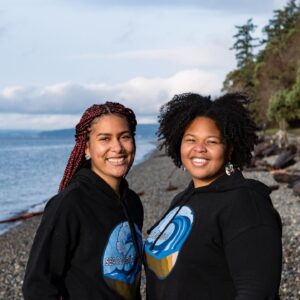
Youth Programming
Sea Potential helps youth ages 12-18 experience the water—sometimes for the first time—and gives them space to ask questions they might otherwise avoid. Sea Potential currently hosts seven programs ranging from tidepooling, to sailing, to arts and marine science, all tailored to different age groups, interests, and identities. Through these programs, they offer various pathways for youth to engage with our saltwater shores.
“We focus on heart-based relationships a lot,” said Savannah. “We invite in guest speakers that come from similar backgrounds as our students so that they can hear their career journeys and bring that into context. Some of our students have told us in the past after career journey sessions, ‘Wow, I didn’t know you could change your mind when you have an idea and go to college or that you could do different things.’”
Sea Potential also hosts community events around Seattle and Tacoma, where families and adults curious about maritime activities can learn alongside the youth.

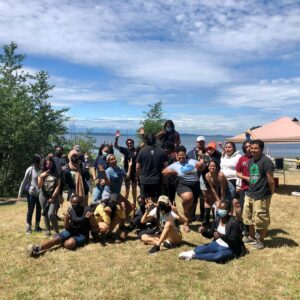
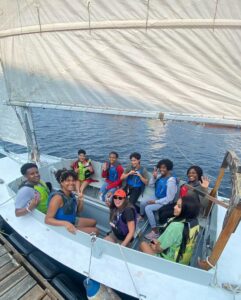
Because they are very mission-driven, people often mistake Sea Potential for a nonprofit, explained Ebony. While much of their work is community-oriented, they also work as consultants to help employers create safe and positive spaces for employees of color.
Developing a Pathway for New Maritime Workers
“We frame all of our work with relationship building, and we do that by always making sure whatever we’re doing–especially when it comes to curriculum–is involving joy, observation, commitment, and authenticity as our basis for our programming. That also plays into the work we do for our employer partners,” said Ebony.
Washington’s maritime industry has many good, high-paying jobs. However, Ebony explains, the current workforce is largely white and male. New potential maritime workers from different communities often have fewer opportunities to join the field due to lack of relationships and/or limited exposure to maritime career paths.
Like many others, Ebony and Savannah see the “silver tsunami” coming within the maritime industry: an aging workforce that is retiring at a much faster rate than new folks entering the field can replace them. This has prompted many in maritime organizations to expand their recruitment efforts to underrepresented communities—including communities of color, who remain significantly outnumbered in the industry, said Ebony.
“It’s one thing to just be inviting people in, but if it’s not a culture that’s safe and conducive for them to thrive in, people are going to leave. And that high turnover goes back into [the] community as negative advertisement for these companies,” said Savannah.
Creating Growth
Part of encouraging youth to consider maritime career paths is getting them connected to and excited about the sea. To do this, Sea Potential must address the negative feelings or experiences that many Black communities hold towards the water. For example, Savannah explained that both historical and personal experiences have disconnected many Black folks from the water—from historical violence such as lynchings near water and segregated pools, to modern-day pressures to straighten hair and avoid getting it wet.
Savannah also shared that facts like the first written accounts of surfing dating back to Ghana in 1640, or the history of West Africans being among the strongest swimmers in the world—some even using their swimming skills to earn money or buy their freedom during enslavement—are stories that have been silenced or overshadowed. However, when shared with youth, this knowledge can be deeply empowering, helping to reclaim a sense of belonging to the water.
“So we like to bring in stories across various different cultures of how people have been connected to water and have a beautiful relationship with water. We bring that to our youth and share those diverse perspectives so that they feel more empowered and encouraged to find their own relationship with water or strengthen it,” explained Savannah.
Savannah and Ebony have witnessed individual students grow more comfortable with and connected to water through their participation in Sea Potential programs, such as tidepool walks, knee-deep water games, and other activities. Ebony shared the inspirational story of one student who has been with Sea Potential every year since its inception: “At this point, when [the student] joins a program, she’s partly leading it, showing people how it goes, and telling them about the ropes and really supporting them. I think that is the epitome of Sea Potential,” said Ebony. Ebony explained that the goal is to help people understand how they feel around water and give them opportunities to explore.
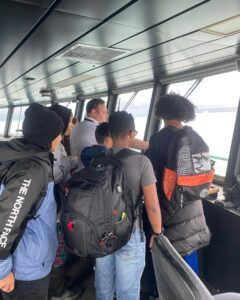
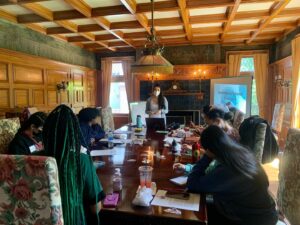
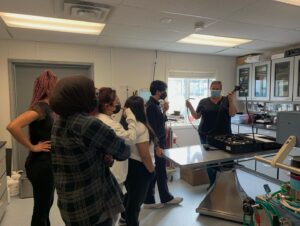
“Providing culturally responsive programming means that we are meeting students where they are and allowing them to challenge themselves in safe ways,” said Savannah. “Oftentimes in new sailing programs, [students] are expected to do capsize drills (overturning a boat) on the first day. But we started off with ‘let’s just walk into the water with our life vest and do a float test,’ because some of our kids were at the stage of ‘I’ve never used a life jacket; I don’t trust this life jacket.’”
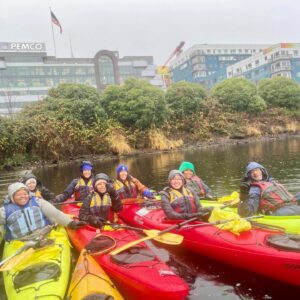
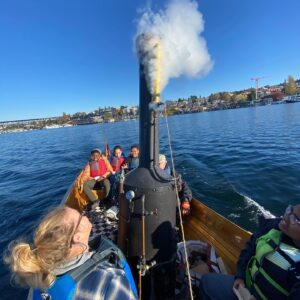
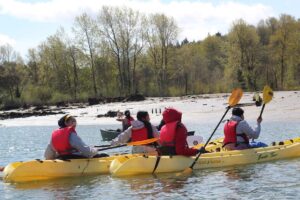
Looking Ahead
The co-founders are excited for the future of Sea Potential and for the future of people of color in the maritime industry, but they also see that more work is needed.
“I’ve been excited about seeing the different internships that have been coming out. I think the ferries and the port have really cool internships that are prioritizing people of color and resources for low-income or people struggling financially,” said Ebony. “I would love to see that expand more out into those smaller organizations or those more niche career paths that we have in maritime and everyone really prioritizing those communities and giving them the resources and access that they need to enter.”
Looking ahead, Savannah hopes to see more schools and funders embracing career exploration for youth in fields like maritime, where job opportunities abound but relationship-building can still prove a challenge for prospective employees.
Starting Sea Potential—a business with ambitious goals of service and change—has not always been easy for Ebony and Savannah. But as Sea Potential has grown, the co-founders have also been excited to learn alongside their students and share their vision of a future where people of color are not just assimilated into a workforce but sought out for their unique perspectives and contribution to innovation.
Want to learn more about Ebony and Savannah’s work? Watch the Seaside Stories series, which puts young Washingtonians in conversation with members of their communities about their relationships with local waters. See our other Women on the Waterfront stories to meet ferry pilots, orca advocates, and more.

